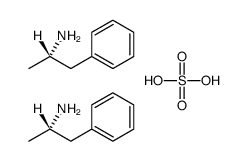d-amphetamine stimulates unconditioned exploration/approach behaviors in crayfish: Towards a conserved evolutionary function of ancestral drug reward
Antonio Alcaro, Jaak Panksepp, Robert Huber
文献索引:Pharmacol. Biochem. Behav. 99(1) , 75-80, (2011)
全文:HTML全文
摘要
In mammals, rewarding properties of drugs depend on their capacity to activate a dopamine-mediated appetitive motivational seeking state—a system that allows animals to pursue and find all kinds of objects and events needed for survival. With such states strongly conserved in evolution, invertebrates have recently been developed into a powerful model in addiction research, where a shared ancestral brain system for the acquisition of reward can mediate drug addiction in many species. A conditioned place preference paradigm has illustrated that crayfish seek out environments that had previously been paired with psychostimulant and opioid administration. The present work demonstrates that the administration of d-amphetamine stimulates active explorative behaviors in crayfish through the action of the drug within their head ganglion. Crayfish, with a modularly organized and experimentally accessible, ganglionic nervous system offers a unique model to investigate (1) the fundamental, biological mechanisms of addictive drug reward; (2) how an appetitive/seeking disposition is implemented in a simple neural system, and (3) how it mediates the rewarding actions of major drugs of abuse.
相关化合物
| 结构式 | 名称/CAS号 | 分子式 | 全部文献 |
|---|---|---|---|
 |
硫酸苯丙胺
CAS:51-63-8 |
C18H28N2O4S |
|
Modulation of locomotor activation by the rostromedial tegme...
[Neuropsychopharmacology 40(3) , 676-87, (2015)] |
|
Emotions and motivated behavior converge on an amygdala-like...
2014-11-01 [Eur. J. Neurosci. 40(9) , 3302-15, (2014)] |
|
Effects of withdrawal from an escalating dose schedule of d-...
1999-11-01 [Pharmacol. Biochem. Behav. 64 , 597, (1999)] |
|
Nucleus accumbens dopamine mediates amphetamine-induced impa...
2010-01-19 [Proc. Natl. Acad. Sci. U. S. A. 107(3) , 1217-22, (2010)] |
|
The metabotropic glutamate 2/3 receptor agonists LY354740 an...
1999-10-01 [J. Pharmacol. Exp. Ther. 291 , 161, (1999)] |